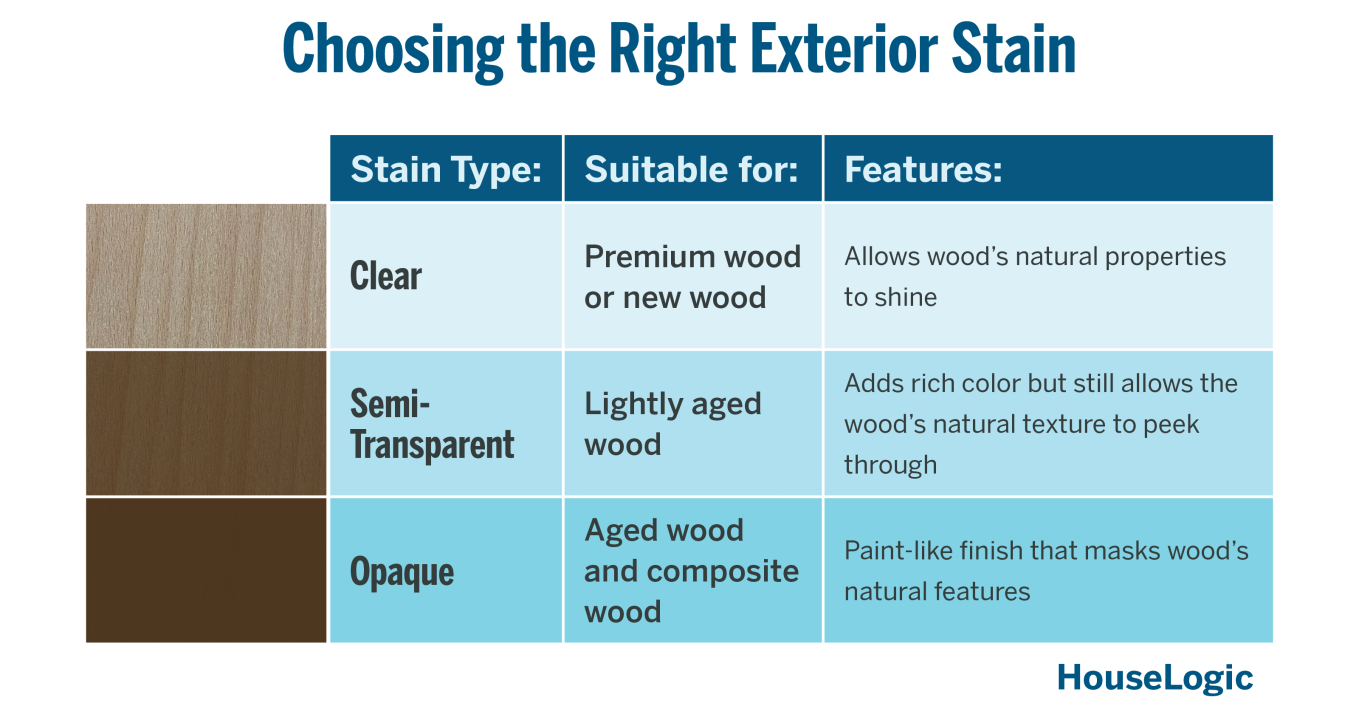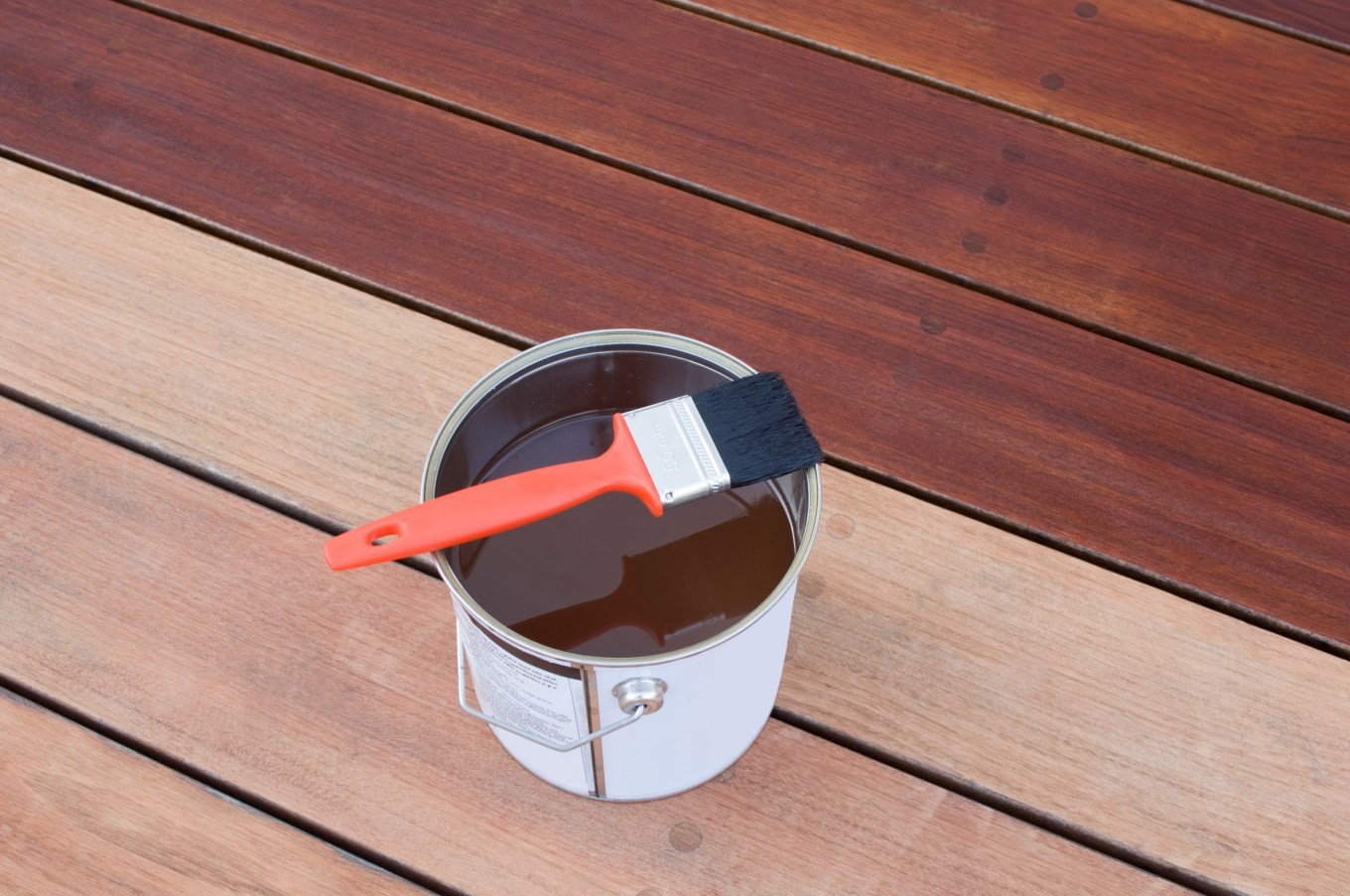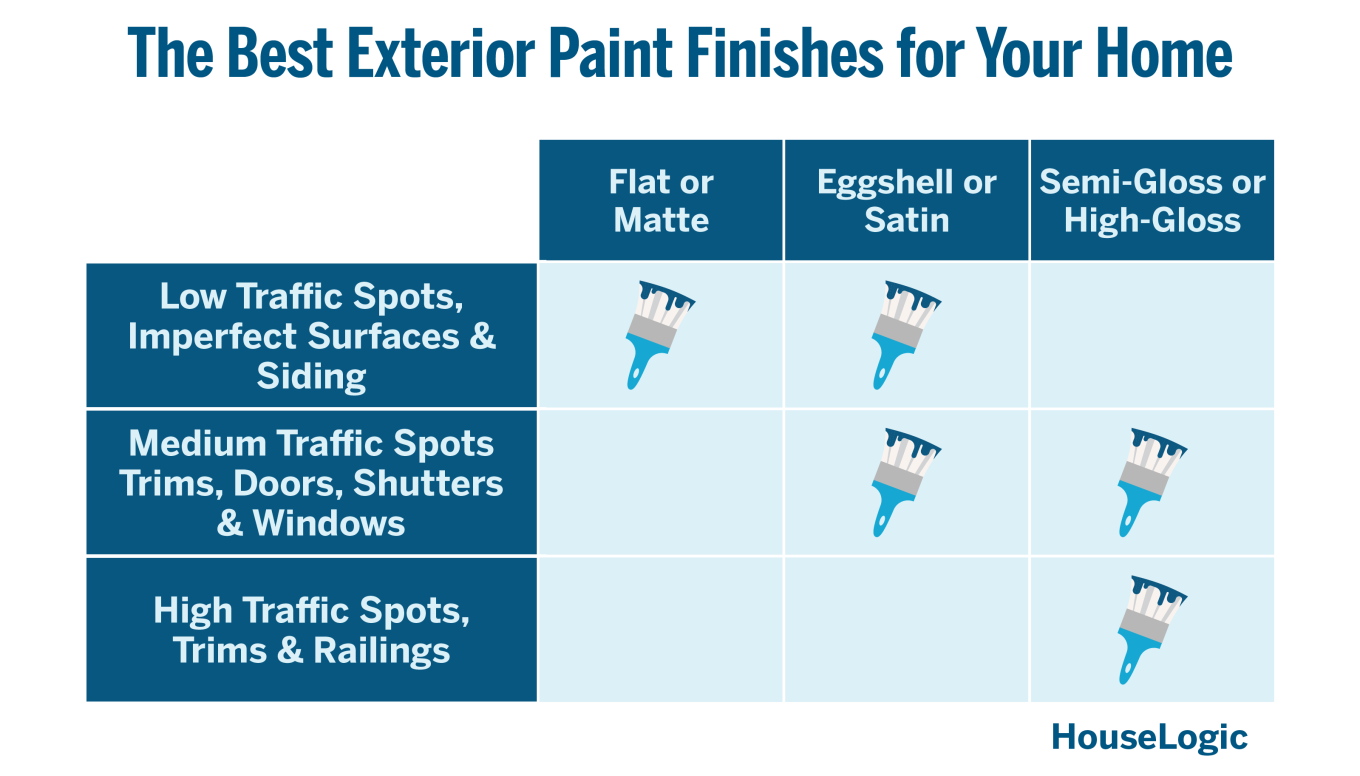When it comes to your home’s exterior, paint is about more than aesthetics. It’s about protection, longevity, and creating a look that reflects you. “It is the first level of protection for your house against harsh weather conditions,” says Gurleen Kaur, founder of Gurleen Painting & Decorating. Picking the right paint types or stain can make a difference between a home that stands up against the elements and one that constantly requires maintenance.
What to Consider When Choosing Types of Paint
Just like interior paints, exterior paints aren’t created equal. Choosing the right paint “impacts durability, weather resistance, and overall appearance,” says Chuck Reger, franchise business marketing coach at the Dwyer Group, who works with painting companies.
Here’s what to look for:
- Durability: The last thing you want is to paint the outside of your home, only to have to touch it up because the paint didn’t hold up to the elements. A durable, effective exterior paint resists chipping, peeling, and cracking.
- Weather resistance: No matter where you live, weather is a consideration. You want to choose a paint that can withstand rain, sun, cold, and wind. Also keep in mind any kind of extreme weather your region might contend with.
- Easy application: The easier the application, the less time you’ll spend on the process.
- Color retention: The sun is known to fade paint color. Just look at a playground set that’s been around a while. The same can happen to the paint on your home if you don’t choose paint that resists fading.
Different Types of Paints
Different paint options work best depending on factors like the surface they’re covering and conditions. For instance, you might not want to use the same type of paint for trim that you would for exterior walls. Here are examples of paint types and where they’re most effective.
Acrylic Paint
For those battling harsh conditions like intense sun exposure or widely fluctuating temperatures, acrylic paint is a go-to option, says Kaur. “It’s excellent in extreme weather and eco-friendly.” That said, he notes it might not hold up on high-impact areas like door edges.
Acrylic paint “is not prone to fading, cracking, or mildew, which is perfect for siding, trim and doors,” says Ryan Parr, founder and CEO of Nashville Painting Professionals.
Oil-Based Paint
Oil-based paint works well for surfaces that need extra adhesion, like previously painted or dusty areas, Reger says. It lays down a smooth finish that might be hard to achieve with other kinds of paint, though it comes with longer drying times and a strong odor. Oil-based is also good for metal railings or woodwork, says Parr, who notes that an additional downside is possible yellowing over time.
Latex Paint
If you live in a moderate climate, are looking for something budget-friendly, and want a paint that dries quickly, latex might be for you. However, it’s less durable in severe weather. That can be defined as exposure to strong sunlight — a UV index of 6 or higher — over a period of several hours, areas of high humidity, and areas prone to salt spray from the ocean or gulf.
That said, Parr likes latex paint because it’s easier to clean, water-based, and more environmentally friendly than oil-based options. “It’s perfect for large exterior surfaces like stucco because it will resist peeling and dry quickly.”
Alkyd Paint
This solvent-based paint will hold up in high-traffic areas — surfaces like door frames, windowsills, and porches that are regularly touched or exposed to the elements. Parr says this option offers a smooth application and glossy finish. It can be a little more difficult in some ways, though. Reger notes: “It requires solvents for cleanup and may yellow over time.”
How to Choose a Type of Paint
When you’re ready to choose what type of paint to use, remember that you might need different finishes for different areas. The surface type and the climate also come into play. Use UV-resistant acrylics in high-sun exposure regions and flexible paints like acrylic on wood that expands and contracts. High-gloss finishes work well for doors and trims because they’re easier to clean and hold up to high traffic, while matte hides imperfections on larger exterior wall spaces.
Exterior Stains

Although you wouldn’t necessarily use stain on the main parts of your home’s exterior, you’ll likely want it for decks, outdoor furniture, fencing, and even accents like window shutters or trim. The type of stain will affect how the wood looks after you’ve applied it.
Clear Stains
This kind of stain lets the wood grain show through for a natural look. But it isn’t the best option for UV protection. Kaur recommends clear stains for premium woods like cedar.
Semi-Transparent Stains
If you want to add some color but still see the wood’s natural texture, semi-transparent stains give you a balance. They also tend to last longer than opaque options.
Opaque Stains
“Opaque stains resemble paint, fully covering the grain while providing maximum protection,” explains Reger. These are ideal for older or imperfect wood. They’re also great for refinishing projects where you want to add color.
How to Choose a Type of Stain

The right stain depends on your goals for your overall aesthetic and for the wood itself. If you prefer to let the wood grain show through, go for clear or semi-transparent stains. Opaque stains maximize longevity and weather resistance.
How you prep your surface will also affect your results. “Clean it thoroughly to remove dirt, mildew, and old coatings,” Reger advises. “Sand rough spots, fill cracks, and let the wood dry completely. If a wood conditioner or primer is recommended for the stain type, apply it for best results.”
Types of Paint Finish for Your Home's Exterior
From matte to high gloss, finishes make a big impact, and your personal style might affect the finish you want.Here are some of your choices:

- Matte: Is smooth and forgiving on imperfect surfaces
- Satin: Has a slight sheen, is easy to clean, and works well on trim
- Semi-Gloss: Is durable and shiny; performs well on high-traffic spots
- High-Gloss: Grabs attention but highlights flaws
- Eggshell: Works well on most surfaces and provides a soft, durable finish
Finishes are about more than looks, though. First, “different finishes offer varying degrees of gloss and protection,” says George Crew, owner of Chicago Paint Crew and Chicago Construction Crew. “Glossy surfaces hide imperfections but cannot be washed out, while shiny surfaces are long lasting and easy to clean but will emphasize imperfections."
If you’re working with a new construction home, you probably won’t need to worry about covering imperfections as you would for an older home. That’s something to consider when choosing a finish.
A semi-gloss or satin finish will work better than high gloss on areas like railings or door trim, which might show more fingerprints and dirt. Consider a satin finish if you want something easy to clean that also has a bit of sheen without being too glossy.
How to Choose a Paint Color
You’ve probably been analyzing the color schemes of the homes in your neighborhood, weighing what you like against what doesn’t work for you. Before you settle on a palette, keep a few things in mind. Your paint color choices affect your home’s energy efficiency, curb appeal, and cohesion within the neighborhood, and should complement the style and architecture of your home. Your choice may even hide imperfections.
- Energy efficiency: To promote energy efficiency and keep the house cool, the rule is to choose lighter colors that will reflect rather than absorb heat. This includes white and light gray, beige, pastels, and soft neutrals. For colder climates, though, it might make more sense to choose darker colors that will insulate the home in the cold months. Remember that you can add pops of color by accenting the front door, window trim, and so on.
- Curb appeal: You want to paint your home with colors you’ll be happy with. But if you’re looking at it as an investment, you’ll also want to factor in long-term curb appeal. It’s important to consider a color palette that might be universally appealing to potential buyers.
- Cohesion in the neighborhood: You want to stand out, but not so much that your home feels out of place with the rest of your neighborhood.
- Style and architecture: Consider the style and architecture of your home. You might love a modern color palette, but it might not work well on, say, a Victorian home. Another factor would be complementing features like brick or stone, trim accents, and even the color of the shingles on your roof.
Use High-Quality Products — Because Quality Matters
In choosing products, go for quality over price, Parr recommends. The exterior of your home is the first thing people see and your first line of defense against the elements. Plus, you won’t need to repaint as often.
“Look for paints with UV and mildew resistance, as well as flexibility to withstand different temperatures without cracking or fading,” Parr says. His company recommends Sherwin-Williams and Benjamin Moore for durability and performance.
You want your house to look great and feel like home, inside and out, Reger says. With the right paint, stain, and expert advice, you can create a long-lasting, beautiful exterior that makes you smile when you come home.
